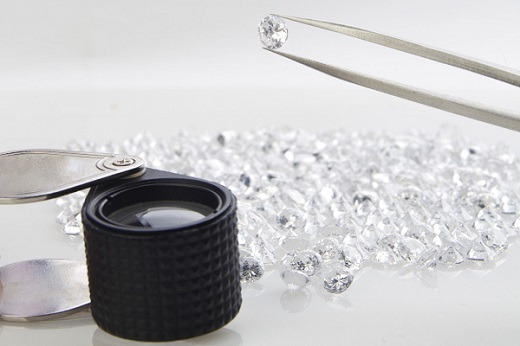Industry Hopes to Appeal FTC Guidelines
 RAPAPORT... The World Federation of Diamond Bourses (WFDB) intends to persuade the Federal Trade Commission (FTC) to change its decision regardingthe description of a diamond. In its new jewelry guidelines, the FTC stated the term"diamond" does not necessary apply only to natural stones that are "of theearth." Thus, lab-grown stones can also be referred to by the term "diamond." "We hope that the door is still open for us to go back andapproach the FTC in order to try and persuade the organization to rethink itsdecision," Ernie Blom, president of the WFDB, said last week. The new guidelines don't correspond with the DiamondTerminology Guidelines issued by the WFDB, in conjunction with other leadinggroups in the diamond and jewelry sectors, Blom noted. Those guidelines specifythat a "diamond" means "natural." "We have a united stand regarding nomenclature, which wasagreed with all the combined knowledge and experience of the leading industrybodies, but the FTC appears to have moved in a different direction," Blom added. However, the new FTC guide does maintain an importantrequirement, said Reuven Kaufman, president of the Diamond Dealers Club (DDC).It requires all lab-grown diamonds and colored stones to be disclosed as such,and sold using qualifying language. "The key takeaway for the industry is that, just as it hasalways been, the natural diamond is the only stone that can be sold, withoutany further qualification, as a 'diamond,'" he noted. The FTC's rules are biased toward the lab-grown diamondsector, and did not take the views of the natural-diamond industry sufficientlyinto account, Blom said. The revision now has the potential to cause confusion in thesector, he added, noting that although a lab-grown diamond must be marked asnot being a mined stone, the new descriptors provide "too much latitude."
RAPAPORT... The World Federation of Diamond Bourses (WFDB) intends to persuade the Federal Trade Commission (FTC) to change its decision regardingthe description of a diamond. In its new jewelry guidelines, the FTC stated the term"diamond" does not necessary apply only to natural stones that are "of theearth." Thus, lab-grown stones can also be referred to by the term "diamond." "We hope that the door is still open for us to go back andapproach the FTC in order to try and persuade the organization to rethink itsdecision," Ernie Blom, president of the WFDB, said last week. The new guidelines don't correspond with the DiamondTerminology Guidelines issued by the WFDB, in conjunction with other leadinggroups in the diamond and jewelry sectors, Blom noted. Those guidelines specifythat a "diamond" means "natural." "We have a united stand regarding nomenclature, which wasagreed with all the combined knowledge and experience of the leading industrybodies, but the FTC appears to have moved in a different direction," Blom added. However, the new FTC guide does maintain an importantrequirement, said Reuven Kaufman, president of the Diamond Dealers Club (DDC).It requires all lab-grown diamonds and colored stones to be disclosed as such,and sold using qualifying language. "The key takeaway for the industry is that, just as it hasalways been, the natural diamond is the only stone that can be sold, withoutany further qualification, as a 'diamond,'" he noted. The FTC's rules are biased toward the lab-grown diamondsector, and did not take the views of the natural-diamond industry sufficientlyinto account, Blom said. The revision now has the potential to cause confusion in thesector, he added, noting that although a lab-grown diamond must be marked asnot being a mined stone, the new descriptors provide "too much latitude."